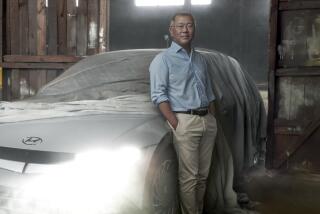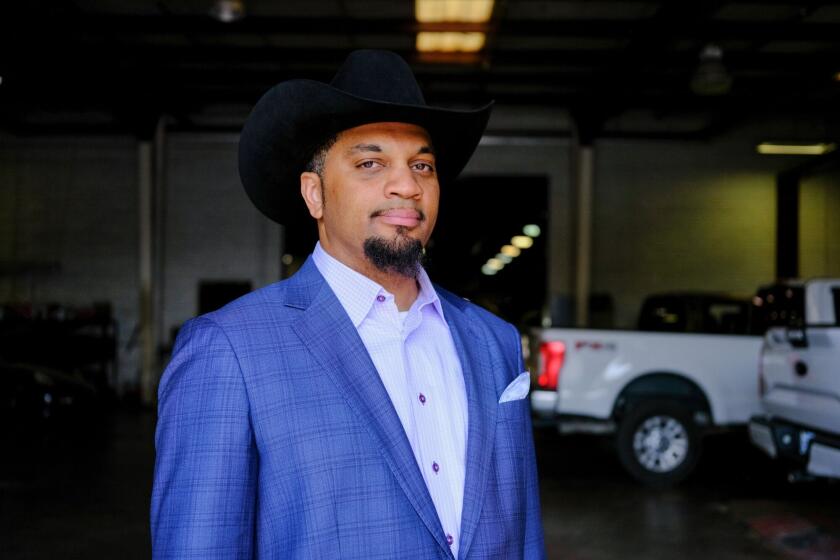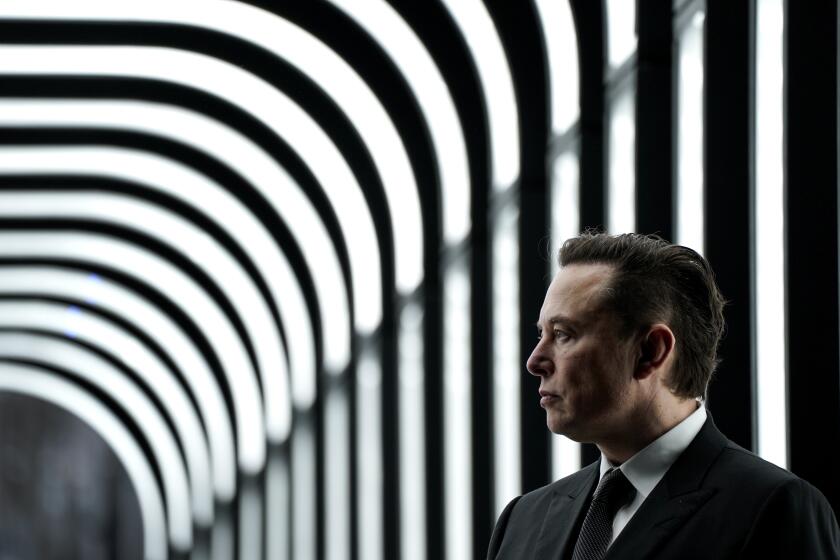Hyundai Pins Its Hopes on Major Ad Campaign : Marketing: The car maker plans a $100-million media blitz to tout its new sports coupe and a hipper, more upscale image.
- Share via
Hyundai Motor America, which swept the U.S. market with its Excel in 1986 only to see sales plunge last year, is preparing to unveil a new national advertising campaign aimed at persuading car buyers that it is no longer a one-trick pony.
While the Hyundai Excel was perhaps the most successful new import car launch ever, sales began a precipitous plunge in 1989--and still are dropping. And Hyundai’s mid-size Sonata, introduced early last year, has never really taken off.
Hyundai was branded, by its own advertising, as an inexpensive little car for the entry level buyer. But now the South Korean auto maker, whose U.S. marketing arm is based in Fountain Valley, wants to change that image.
The nearly $100-million all-media advertising campaign, by Backer Spielvogel Bates/Irvine, will dump the now tired “World Class Cars” tag line and begin trumpeting Hyundai as a car maker that provides value for almost every taste.
The campaign should squelch rumors that the auto maker is unhappy with Backer Spielvogel, which created the successful “Cars that Make Sense” campaign that launched Hyundai’s entry into the U.S. market.
The new campaign, Hyundai officials hope, is one that will help restore the company’s once-spectacular momentum.
Both Hyundai and Backer Spielvogel are remaining tight-lipped about the new campaign, which will be inaugurated Sept. 17 in conjunction with the official introduction of the Scoupe, a 2+2 sports coupe built on the Excel chassis.
The sporty Scoupe is considered an “image car,” with a base price of $8,325. The company also intends to add a fourth model--a compact sedan based on a new “J” platform--to its line early next year.
Rod Hayden, executive vice president and chief operating officer of Hyundai Motor America, said the new ad campaign is intended to build a whole new image for Hyundai--to “reposition us in the market.” The basic premise of the campaign will be to show that a Hyundai is both a value and an exciting, well-made and well-equipped car, said Harry W. Gresche, senior vice president and management representative at Backer Spielvogel in Irvine.
Ads in the new campaign will present a list of impressive features--items that the average car shopper might not expect to find on cars priced in the $6,500-$13,000 range.
The kicker, Gresche said, will be the underscored line, “Yes, Hyundai!”
As part of the image remake, Hayden said in an interview earlier this summer, a Hyundai design center will be in full swing in Fountain Valley by early next year to help impart a distinctly American flavor to cars intended for the U.S. market.
Other plans, he said, call for:
* Continued upgrading of Hyundai models, with appropriate price increases, to help expand the product mix and create more reasons for Hyundai buyers to return to the company’s dealerships.
* Possible development of higher performance engines for the Scoupe and the top-of-the-line Sonata.
* The current force of 380 dealerships to swell to 750 by late 1992, greatly expanding Hyundai’s penetration of secondary markets.
The new ad campaign is the cornerstone of Hyundai’s building plans, however.
The company needs a new image, automotive analysts say, because the old one has been killing it.
“In general, Hyundai now has two challenges,” said automotive marketing consultant David Hillburn, whose Los Angeles-based Hillburn & Associates helped with the initial Hyundai launch in 1986. “The first is repositioning and making the transition from an economy car company to a full line manufacturer.”
The company’s second challenge, Hillburn said, is dealing with the industry-wide slump.




